|
You may be thinking: flourishing, well-being ... sounds good, I'm in! But then reality creeps in and you say: I have no time to invest in well-being. People are going to have to figure this out for themselves. Last weekend, I attended the 2019 International Leadership Association Conference. Here’s what I learned… #1 Well-being is critical for organizational and student success!
#2 Flourishing schools are focused on these things....
#3 Award-winning school leaders do the following... When researchers (Kutsyuruba, Sadata Arghash, & Kharyati) looked into examples of positive deviance at the principal level, they found Canada’s “Outstanding Principal” award recipients demonstrated these leadership features: They fostered nurturing relationships
Leadership scholar, Robert Kegan, asks us to: “Imagine so valuing the importance of developing people’s capabilities that you design a culture that itself immersively sweeps every member of the organization into an ongoing developmental journey in the course of working every day. Imagine making the organization itself--and not separate, extra benefits--the incubator of capability…” (2016) What would that look like to prioritize developing well-being in your school or in your classroom? Malayter & Dehmer (2019) recommend doing 4 things to start:
To summarize, well-being is critically important. So many schools have high turnover rates and are feeling the time crunch to improve scores quickly, but what if school leaders re-focused their attention and made time to create space for teachers to grow and learn and be well? Schools that don’t prioritize well-being likely see high rates of teacher burnout and signs of deteriorating teacher and student well-being. Teacher stress affects student success and well-being! It’s important we tackle this issue. How do we do this? We look at what is being done in schools that are flourishing. We learn from the positive deviants. I hope this quick summary of the exciting research being done on this topic helps you think about how your organization can take steps to increase teacher, student, parent, and leader well-being. Don’t forget to share your brilliant ideas with the Time for Teachership community in the comments section or on our facebook page. Keep thinking big, acting brave, and being your best self. Go forth and flourish!
0 Comments
I am incredibly excited for today’s post and the related freebie I’m giving to you! Today, I’m sharing more about building a thriving classroom culture and what tools, language, and activities you can use to do so. As I mentioned in last week’s blog post, “5 secrets to ‘Classroom Management’: Part 1,” I highly recommend using the amazing Values in Action website to help you foster a positive culture in your classroom. Here’s why…
So, at the start of the year, I posted the values on my wall and asked students to take the survey to identify their strongest character strengths. I also used the activities from the site (or made my own) to do a 5 minute Do Now or bellringer activity to start class. This was a way to make sure we didn’t just leave the values on the wall and forget about them the rest of the year. We would also have class appreciation activities in which we would each verbally or in writing share something we appreciated about others in the class, and these values were a great tool to help students concretely identify strengths in their peers. Definitely take some time to go to the Values in Action site, and check out what they offer. In the meantime, I want to give you a freebie that I used as wall decor. It helped my class foster a positive culture for learning and it helped me remember this work of character and culture building is just as important as the content I taught. Click the button below to download the freebie now! If you know of other teachers who may use this, send them the link to this blog post. Several of my colleagues and I used the same posters in each of our rooms, and it was helpful for multiple grades and subject areas in the school to be familiar with the same strengths-based values language. Keep building that positive classroom climate! You and your students will thrive. Don’t forget to think big, act brave, and be your best self. In “Part 1” of this 2-part post on “classroom management,” I talk about why I don’t like the term “classroom management,” and I share 5 tips for teachers to foster and maintain positive classroom culture within their own classrooms. If you haven’t read that post, I recommend you go back and read that first before reading this one. This post focuses on how school leaders can support positive classroom cultures through school structures. Note: school leaders refers to administrators as well as teachers in leadership positions as well as teachers who may want to take on a leadership role in either a formalized position or in a less formal role, perhaps as a member of a committee or through supporting after school student clubs). In the previous post, I listed 5 ways teachers can foster a positive classroom culture in the classroom:
As leaders, there are several ways to support this work. Model this work with teachers and staff at meetings and in how you create expectations for adults. Encourage teachers to visit the classrooms of other teachers who do these things well. In addition to supporting teachers in their individual classrooms, there are some steps school leaders can take to build up school-wide systems that support each classroom in doing this work. Specifically, let’s talk about #4 and #5 on the list. Restorative practices in place of punitive discipline. Traditional discipline policies disproportionately negatively affect students of color and students with IEPs. Being suspended decreases the likelihood of graduation, and contributes to the school-to-prison-pipeline. Restorative practices have been shown to reduce disruptive and violent behavior in schools, increase attendance, and improve school culture and problem-solving skills (WestEd, 2016). How do we do this?
Shared leadership, specifically involving students in the creation of school policies. Students and teachers will buy in to school policies more if they helped co-create the policies. How do I do this?
Whether you’ve been doing restorative and shared leadership work for years, or you’re brand new to these approaches, I’d love to hear what your biggest challenges have been. Click the button below to share the biggest challenge you've faced in fostering positive school culture with our brand new Time for Teachership community on Facebook! Collectively, I’m confident we can come up with some great solutions. You are doing amazing things. Sending you strength and resilience to keep that teachership in motion. Think big, act brave, and be your best self. One of the most common struggles I’ve heard talked about by and for new teachers is “classroom management.” I struggle with the phrase “classroom management,” and prefer to see my role as a teacher as cultivating a positive classroom culture. To me, this simple switch in language interrogates the idea that I am there to “keep students in line” or punish them when they break a rule. I don’t think that should be a central part of my job description. I do think ensuring a positive classroom culture is an extremely important part of my job description, if not the most important part. For more on this idea, check out Afrika Afeni Mills’s article “Classroom Management Reconsidered” and Teaching Tolerance’s “Reframing Classroom Management: A Toolkit for Educators”. If you’re still with me, I’ll share some ideas about my approach to cultivating a positive classroom culture. Here are my top 5:
There is a lot here. So, I’m breaking the details into 2 blog posts. In this one, we’ll focus on what you can do in your own classroom to cultivate a positive classroom culture. In “Part 2,” we’ll focus more on what school structures and initiatives could facilitate thriving classroom and school-wide cultures. Let’s get started with what classroom teachers can do in their own rooms... Co-create class norms. This works best at the start of the school year, but it can be done at any time of the year—better late than never! It will help with student investment in maintaining a positive classroom culture. How do I do this?
Foster relationships. I love this because it is proactive instead of reactive, and it works! How do I do this?
Allow for student choice and autonomy and explicitly teach self-regulation. This one is a balance. Choice and autonomy are motivating and promote ownership of learning, but we need to help students learn how to self-regulate and problem solve on their own without constant teacher intervention. How do I do this?
Restorative practices in place of discipline. Traditional discipline policies disproportionately negatively affect students of color and students with IEPs. Being suspended decreases the likelihood of graduation, and contributes to the school-to-prison-pipeline. Restorative practices have been shown to reduce disruptive and violent behavior in schools, increase attendance, and improve school culture and problem-solving skills (WestEd, 2016). How do I do this?
Shared leadership, specifically involving students in the creation of norms and learning activities. Students and teachers will buy in to norms and engage in class activities more if they helped co-create them. How do I do this?
If this is new for you, I admit, this is hard work, but I will also share that it has the power to transform the culture of your classroom. If you’re already doing this, invite other teachers to see your class in action! Share your brilliance and show other teachers that it is possible. Whether you’ve been doing this type of culture building for years, or you’re brand new to this approach, I’d love to hear what your biggest challenges have been. Add a comment below or reach out to tell me via email. Let's start brainstorming next steps! Just taking the time to read this blog until the end shows your dedication to professional growth. You are a rockstar. Sending you strength and resilience to keep that teachership in motion. Think big, act brave, and be your best self. As a first year teacher, new to the teaching scene, I based my instruction on how I was taught in school. I would present and students would take notes. At specified points during the unit, students would complete projects. I would grade those projects, and return them with a grade. They would be glanced at and, often, thrown in the trash or left on the desks. Interestingly, looking back, the one class I didn’t do this for—the class that was far more interesting as a result—was the class that did not have a standardized test at the end.
I clearly thought, I need to cram as much information as possible into students’ brains by the end of the year. Thus, to prepare for class (I thought): I needed to make sure I knew all of the facts and details that may be on the test; I needed to summarize these details into sentence-long soundbites, and to make sure it was easier for students to take notes, I needed to make them a worksheet with all of the information I would share with a key word missing, and then they can just fill in the blank! Here’s what that looked like when I was planning these lessons. Each week, for each course, I would:
I cringe to think this was my life and the lives of my students in my classes. If you’re reading this and thinking, “That’s not far from what I do for my classes. There’s nothing wrong with my classes.” There may not be! Lecturing can be an efficient way to deliver core content understandings. Hattie (2018)’s research found direct instruction to have a .60 effect size, and note taking to have a .50 effect size, which are both medium effect sizes. Not bad! Also, I’m sure you do things like make the lectures interactive and add in engagement activities so students are not just taking notes every day and it’s not bell-to-bell lecturing. For me and my students though, this approach was not working. The data backed it up—the students were not learning, in fact, they were barely coming to class, and my stress level let me know that this planning process was not working for me either. Here are 5 big things I’ve learned and wish I could go back in time to tell my early teacher self:
Let’s break these down a bit. Planning in unit arcs is easier and more strategic than planning single lessons. This is Backwards Planning 101 at its core. You have to know where you’re going, but even more than that, I realized when I’m designing for engagement, I need ways to get and retain students’ attention. When I figure out an interesting assessment first and develop a compelling question students are answering in the assessment, then I can go back and pose that question on Day 1 of the unit. I can find a current event or modern, relatable example so that students can dive into answering the question just based on what they already know. Integrating students’ prior knowledge has a very large influence on student learning, with a .93 effect size (Hattie, 2018)! Teaching core understandings. If there was just one thing from this list my former teacher self could learn, it would be this. Unfortunately, standardized tests involve a lot of knowing the details, but there are two things I have to say about that: 1) that’s changing, tests are evolving; and 2) minute details are things can be memorized in the weeks before the standardized test. It will be easier for students to memorize small details when they understand the larger conceptual ideas, and often, when students are faced with a detail-based multiple-choice question they don’t know, their deep thematic understandings will often help them eliminate incorrect answers. Also, many standardized tests also involve an essay component. This is where my students struggled and where a lack of core understanding is critical. A final note: teaching core understandings does not mean you don’t teach details—the details are what make it fun—but you may spend more time learning the details of fewer topics. When students are able to practice working with details and reasoning out scenarios on one topic, they can more easily transfer those skills to another topic in the future. Isn’t that what we ultimately want? Students are more engaged when they are asked to think. This seems intuitive, but clearly it wasn’t resonating with me! Basing student tasks on the higher-order thinking levels of Webb’s DoK chart or Bloom’s taxonomy is a great start. Asking students to make connections across sources, class notes, and current events was an approach I eventually came to love. The most engaged I’ve ever seen my students was during class discussion. Not only were discussions engaging, but they also have large effects on learning (.82 effect size)! While some students don’t enjoy public speaking, over time, many of my students who were initially reluctant to share were able to talk more. Identify low-prep, high-impact activities. I wrote an entire blog post on how to do this earlier this week. Go check it out! Choosing a handful of engaging protocols was a big step towards maximizing my time. I streamlined how to plan for each protocol and knew exactly what prep was needed. (Over time, the prep needed was less and less because students were so used to the routine itself, I only had to insert the unit-specific information, which was often a small prompt or a few text choice links.) For me and my class, discussion-based protocols were a big go-to. At times I felt like I should be mixing it up more, and introducing new activities more often. However, I learned that repeating activities or protocols is helpful. It saves you planning time. It saves students’ the mental energy of learning a new protocol, and leaves more brainspace and class time for learning! Building relationships and content knowledge can be accomplished in the same activity. When I asked students to talk about the content (making connections to their lives, prior understandings, asking their opinions…), I learned so much about them. The students learned a lot about each other, too! Even students who didn’t speak a lot said they liked to listen to their classmates. Not only can we learn about students’ experiences and ways of thinking and being, but students can learn about us. Depending on the protocol, I also participated in class discussions to model vulnerability in sharing and give students a chance to learn more about my life experiences and interests. (I just observed or facilitated student seminars, but I would always participate in circles when the talking piece came to me. More to come on these protocols in a later blog post!) I have certainly learned a lot about myself, my planning style, and my students in the past decade, and I hope that by sharing my mistakes as a teacher, I can help you learn and grow too! I’m eager to continue my learning journey, so I’d love to hear what you’ve learned from your time as an educator. Share a comment below or tag me on Twitter @lyons_lb or on LinkedIn (Time for Teachership or Lindsay Lyons). Finally, if you are not already getting tips and free printables in your inbox from me each week, get on the list! Just click the button below. I recently listened to this podcast episode in which Kate Northrup, author of Do Less, talks about how to figure out the best ways to spend your time. It was great. It is so simple, yet so powerful. So, I want to share it with you here. I also want to encourage you to check out her book! I have not read it yet, but it is on my “To Read” shelf, and I am excited about it. It is written for a mom audience, but from the glimpses I’ve already had, it seems incredibly relevant for teachers or anyone who is busy! So, what’s this strategy all about? Basically, you’re going to inventory what planning activities you do, and then figure out which ones are giving you the biggest wins in terms of results (i.e., student growth and achievement). I’m adapting this slightly for a teacher planning lens, but use it however you would like! Here's the step-by-step:
In the podcast, Jenna and Kate talk about how this reflects the 80/20 rule: 80% of your results come from 20% of your work. The goal is to identify what that 20% is, and then stress a lot less about the other 80%, and maybe even cut some of it out completely! Is this activity a bit challenging for you? Here are some tips to get you going:
Your challenge this week: identify your high-impact activities. Which activities are getting you those big wins? This may help you let go of some of the other time-consuming planning activities that just aren’t getting you the results you want. Sure, other activities may move the needle forward, albeit slowly, but once you know which activities will move the needle way forward, let yourself: think big (we want those big wins), act brave (take a small step and shift your planning for just a week to test this theory) and be your best self (which is not likely when you are consumed by endless planning that does not yield big results and leaves you feeling exhausted and unfulfilled). Once you have identified your high-impact planning activities, don’t keep it to yourself! Share your high-impact activities in the comments section below or on social media. Keep me posted! I’m @lyons_lb on Twitter and Lindsay Lyons on LinkedIn. I cannot wait to hear what you come up with. As educators and practitioners of teachership, we strive to think big, act brave, and be our best selves. Why?
If you haven’t read the previous 3 blog posts, I encourage you to go back and take a look to learn more about these three ideas. Knowing these things are good for us as educators, could they also help students? Yes! Absolutely. Imagine...a school full of students who think big, thus accomplishing more and seeking new knowledge on their own because they are genuinely excited to meet their goals. With this new knowledge, they are able to act brave and lead change for educational equity by serving in leadership roles within their schools. As a result, they experience improved agency, competence, civic efficacy, academic performance, and relationships with peers and adults (Mitra, 2018), and the school benefits from the better organizational decisions made in the form of students’ improved academic performance. Students are able to identify when they are at their best, resulting in a state of flow when they are at school, feeling alive and fulfilled, and improved physiological health. Sounds good to me. So, how do we make this happen? Here are three small steps you could take to foster “studentship”:
In the next week, try just one of these small steps. I’d love to hear what you do and how it goes. Respond in the comments below, post on Twitter and tag me @lyons_lb, or tag me, Lindsay Lyons, on a LinkedIn post. And if it gets tricky—and it probably will because this work is not easy—reread this blog post to remind yourself of all the benefits for you and your students when you think big, act brave, and be your best self. I’m sure this is not news to you, but teachers are stressed and it is a big problem. 46% of teachers have high rates of daily stress, which ties with nursing to be one of the most stressed groups of professionals. 78% of teachers feel exhausted at the end of the day - both physically and emotionally. The impacts of this exhaustion include increased illness, absenteeism, cynicism, and poor decision making as well as decreased energy and enjoyment. And it’s not just the teacher—students are impacted by their teacher’s exhaustion as well. Teacher burnout predicts student academic outcomes and is correlated with lower levels of student motivation and increased student stress (Lever, Mathis, & Mayworm, 2017). What can we do about it? We can help ourselves and our colleagues thrive. When people are able to thrive at work, there are positive outcomes. When you feel energized, you have enough capacity for the work and don’t burnout. When you’re able to learn and grow in your job, not only do you accomplish more for your organization, but you become increasingly confident in your ability to achieve. When you are able to create resources, see the positive impacts of your work, and spread knowledge, this spirals upwards to generate continued thriving. Finally, when employees are able to co-create the work environment, they are able to flourish (Spreitzer & Porath, 2014). Spreitzer and Porath’s (2014) chapter in How to Be a Positive Leader: Small Actions, Big Impact, lays out several steps to take to enable thriving at work. Here’s what you can do:
Spreitzer and Porath (2014) also suggest several steps for organizational leaders:
The Reflected Best Self One activity I absolutely love that contributes to thriving both at work and in life is the reflected best self (RBS). Developed by Roberts, Spreitzer, Dutton, Quinn, and Heaphy (2005), you can use the RBS to identify your individual strengths and leverage those to increase your future potential. The exercise asks you to gather contribution stories from people in your personal and professional life to deepen your understanding of your best self, how you contribute to the world around you. The RBS helps regenerate people’s resources to help them advance and become extraordinary. It expands one’s constellation of possible selves, and when a person’s possible self is more vivid, performance improves. It also improves well-being as a result of social architecting, or the “pro-active selection of settings, people, and tasks that draw on their strengths” (Roberts et al., 2005, p. 726). Remember, job crafting? The RBS also helps people live authentically, as their true selves, experiencing and intense involvement in their work, a special fit that is not typical of daily tasks, feelings of being alive and fulfilled, and the impression that “I’m meant to do this” and “This is who I really am.” This also promotes psychological health, so your body functions better (Roberts et al., 2005). So, we know teachers are exhausted, and we know helping people be their best selves has a ton of physical, mental, and job performance benefits. In fact, feeling a greater sense of purpose and seeing how you add value, improves your ability to cope with stress. Doing this work creates a cycle of thriving! You may be thinking, "This sounds great, but where do I start?" Here's my small step challenge to you: Help yourself thrive at work by job crafting and setting goals for your work that bring out your best self. Roberts et al. (2005) share that when you are able to identify goals that are aligned with your true self, and then you take action to achieve these goals, you experience a heightened sense of living as your true self, feeling alive and fulfilled, and being physiologically healthy. So, download the job crafting template below, fill it out, and post it in your workspace. Then, share this blog post with a colleague so they can do the same. You got this, you amazing educator, you.
Just remember: think big, act brave, and be your best self. Change is hard work. It takes a healthy dose of bravery to do something you haven’t tried before. You know you have survived so far by doing things a certain way, so you may be thinking, “Why would I risk things getting worse?” So why should you take the leap? Because things can get better. You, your students and your school are all worth finding out. Angela Watson ends each Truth for Teacher podcast with the phrase, “I’m not telling you it's going to be easy, I'm telling you it's going to be worth it.” That sums it up nicely. Consider the transformative idea that brought you to this blog. Was it the chance for less stress in your daily work habits? The chance to have an actual weekend, free from schoolwork? Was it the desire to invest more time in yourself and your professional growth? Was it the opportunity to transform your school into one where teachers and students have a real say in what you do and how you do it? Was it the dream of a school that achieves racial and gender equity and commits social justice activism? Don’t doubt that any of you—yourself, your kids, your school—are worth it. You are worth taking that chance that school could be better. Now, maybe you are totally on board with the idea of worth, but you’re wary of the outcome. You might be thinking, why should I trust this is a good investment of my time? Glad you asked. Here’s what compelled me to take the plunge: Why streamline planning to make time for professional growth? John Hattie’s (2018) research found collective teacher efficacy is the number one influence on student achievement. CTE is when teachers collectively believe they can positively impact student learning for all students and this is confirmed by data. CTE (d=1.57) has 2x the impact on student learning as feedback (d=0.72), and almost 3x the impact of classroom management (d=0.52). Many schools already embed collaborative professional learning (i.e., staff PD, PLCs, department/grade team meetings) into the school day, so you are likely already doing some of this. Unfortunately, lots of school PD is not personalized to your content/context, collaborative, job-embedded, and ongoing. Consequently, research has shown that many PD initiatives appear ineffective in supporting changes in teacher practices and student learning (Learning Policy Institute, 2017). So, especially if the school-wide PD is not doing it for you, identify an area for your own growth, seek out research on the topic, or visit colleague’s classrooms that excel in this area. Building up your individual efficacy can strengthen CTE and vice versa (Hoy, Sweetland, & Smith, 2002). But, as a teacher, why should I stop grading each student worksheet? To clarify, I don’t think you need to completely stop grading worksheets, but ask yourself why you’re grading each worksheet. Is it to let students know how they’re doing? Could you instead provide feedback during class time, in a weekly 1:1 conference? Might students understand your feedback better if it was in the moment or spoken face-to-face? Is it so kids can take their graded work back to their families and let them know how they are doing in class? Is there a better way to do this? Have students journal (in writing or via audio/video recording) for 5 minutes a day or once a week on the feedback they received during class. This way, students are writing all of those comments, saving you time and helping them internalize their strengths and areas for growth! Multiple studies have shown that mastery-based or standards-based grading systems improve students’ academic performance. Here’s what that could mean for your practice: If a homework/classwork assignment is being graded for a non-academic skill, like work habits, just check off that they completed it. If it’s classwork, this can be done in class as they work. By giving students feedback in lieu of grades on formative assessments, you provide opportunities for revision and consequently, skill development. Haystead and Marzano (2009) found teachers who measured skill growth over time on mastery rubrics noted a 34% gain in student achievement. (Read this paper for more information on standards-based grading.) As an administrator, why would I release control of the school to teachers and students? Firstly, the evidence points towards a positive relationship between distributed leadership, organizational improvement and student achievement (Hallinger & Heck, 2009; Leithwood & Mascall, 2008). When people feel supported and valued, they are more likely to work towards collective goals (Carson, Tesluk, and Marrone, 2007). So, involving students and teachers in school governance is in the best interest of the school itself. Secondly, there are individual benefits for those who participate as leaders in the school. Dana Mitra’s (2018) review of student voice research found students who participated in these initiatives had improved agency, competence, civic efficacy, academic performance, and relationships with peers and adults. For teachers, taking on leadership roles in the school is a powerful opportunity for professional growth. It also improves teachers’ working relationships (Seashore Louis, Leithwood, Walhstrom, & Anderson, 2010). Finally, it gives administrators more time to focus on other important tasks. Why should I rock the boat and raise racial and gender equity as points of concern? The reality is our existing educational systems are not adequately serving our students of color. (The 2016-17 U.S. graduation rates for Latinx (80), Black (77.8), and American Indian (72.4) students were all around 10 percentage points lower than white students’ graduation rate of (88.6) (National Center for Educational Statistics). Black girls in the US are disproportionately targeted by school dress codes and experience victim blaming from their teachers. Too many high schools ban hair wraps or other head coverings and regulate skirt/short length and clothing tightness. As an interviewee for this Independent article stated, “Any adult sexualising girls’ bodies by policing their clothing is problematic for students and results in negative academic, social and emotional effects on students. Too often girls recounted stories about administrators implying that girls are inviting sexual harassment because of what they are wearing. Not only is this blaming the victim, it also communicates to boys or other harassers that they are not responsible for their own behaviour.” In a study of urban and rural schools in the U.S., 1.8% of youth identified as transgender. About 2 out of every 100 students. Transgender youth reported significantly increased rates of depression, suicidality, and victimization compared to their cisgender peers (The Trevor Project). School-specific statistics show 75.1% of transgender students feel unsafe at school because of their gender expression, and 63.4% of transgender students avoid bathrooms (Gender Spectrum). It is our responsibility to all students to take action against systemic racism, xenophobia, sexism, and transphobia. All educators’ voices are needed in this struggle. We can take steps to deepen our understanding of systemic racism and institutional sexism and explore ways we can disrupt educational inequity. Debra Meyerson’s book, Rocking the Boat: How Tempered Radicals Effect Change Without Making Trouble, is a great read if you are interested in tackling the “rocking the boat” aspect of this question. If taking a public stand is too much at first, Meyerson offers ideas for quiet resistance, such as: psychological resistance (e.g. “armoring”), self-expressions (e.g. dress, classroom decor, leadership style), and behind-the-scenes actions (e.g. work with a community-based organization on education issues, mentor and encourage others to “stay in the game, even when it looks hopeless,” channeling information and resources for those who don’t have access). Taking these actions can be self-affirming, connect you with similarly-minded educators, and produce ripples that lead to additional change. Karl Weick refers to this rippling as “deviation amplification,” so your action “sets the stage for others like it to follow,” (Meyerson, 2008, p. 44). What if staff or family members are uncomfortable with social justice activism projects? As a school (or as a class, if you’re asking from the perspective of an individual teacher), you want to decide who your community will be. Clearly state your community values and communicate those to all school stakeholders. If family members struggle with social justice topics, invite them into your school, share class activities/videos/readings with family members so they can explore what students are learning alongside their kids. Support teachers by helping them prepare for difficult conversations with family members who struggle to see the value in learning about or taking actions towards social justice. Back teachers up when they tackle difficult topics with students, reiterate those school values. When the going gets tough, and it likely will, re-read the previous question and answer to remind yourself and your school community why we push for justice and educational equity: we are here to help all students learn, grow, and lead their communities responsibly. Phew, that was a lot! In summary, remember you are capable and worthy of acting brave. The current state of education is not just working for many students and many teachers. It can get better. We just have to work for it. Take one brave step today. It can be small! And go ahead and share this blog post with a friend, colleague, or loved one who is ready to take action with you. For the next few minutes, let yourself release all of the frustrating realities that are preventing you from dreaming up a better teacher life. Let them enter your mind and then let them go. Imagine them floating into the air like balloons. If you're more of a writer, draw up a quick list of all of the things that weigh you down and don't let you dream. Then, crumple it up and throw in the recycling bin. Take a a marker to it and scribble to your heart's content. Just let them go for a bit. We can circle back to them later, but right now, for the next few minutes...THEY. DO. NOT. EXIST. Okay, did you do it? Is your mind clear and ready to dream up a better teacher future? The reality is, all of the blog post tips, strategies, or success stories in the world won't make a difference if you don't let yourself imagine what could be possible. So, once you're ready, let's get started. First, consider why you got into teaching? When you closed your eyes and thought of life as a teacher, what did you see yourself doing or experiencing that made you excited to be in the classroom? Write those activities down. You may want to start with, the best parts of teaching are when I do/say/hear/feel... Now, think about what skills and learning experiences you want for your students. What do you hope they retain and remember from your class? Try listing these using the sentence starter: I want my students to learn/say/do/feel... I'm going to go out on a limb and say many of your visions of teaching were centered on your interactions with students, and the things you want for students involved a mix of academic and personal takeaways. Whatever your responses were, keep these in mind, as these are the activities and skills we want to plan for throughout the year. Now, if you were to focus all of your time on accomplishing just these teacher-facing and student-facing goals, what would your planning time look like? What types of activities will help your students learn most effectively and also nourish your teacher soul? Try designing a job posting for your planning time.
Click on the image below to download the free printable template! When your vision is done, post your vision somewhere you can see it when you plan. Nearly all of your planning time should be dedicated to bringing these goals to life. If your time is side-tracked by other tasks, identify what those tasks are. We will address these barriers, but today is all about thinking big and letting yourself simply dream of a better life as a teacher. Once you have written, posted, and internalized this vision as something that is worthy of striving towards, then we can continue with the work. If you are feeling stuck, click the button below to get my 50/40/10 planning time freebie to help you dream up ideas for how your use of planning time could radically shift. I'd love to hear about your process. Share a picture of your vision posted in your workspace! Want to make sure we get the barrier(s) weighing you down, share those in the comments section too. This will help me design content that directly addresses your needs. |
Details
For transcripts of episodes (and the option to search for terms in transcripts), click here!
Time for Teachership is now a proud member of the...AuthorLindsay Lyons (she/her) is an educational justice coach who works with teachers and school leaders to inspire educational innovation for racial and gender justice, design curricula grounded in student voice, and build capacity for shared leadership. Lindsay taught in NYC public schools, holds a PhD in Leadership and Change, and is the founder of the educational blog and podcast, Time for Teachership. Archives
May 2024
Categories |


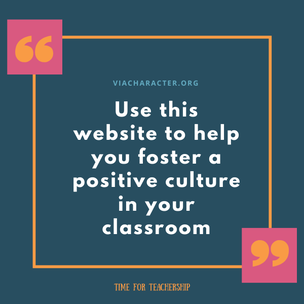
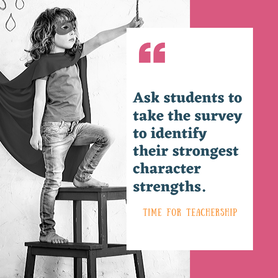
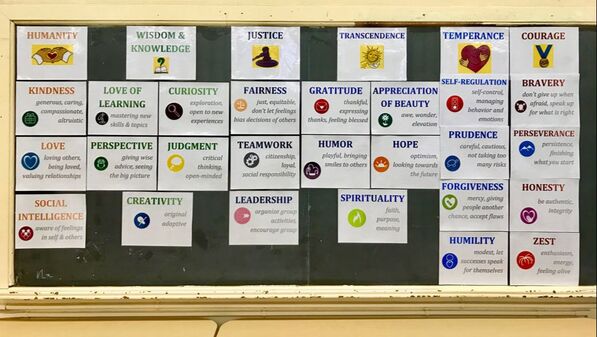


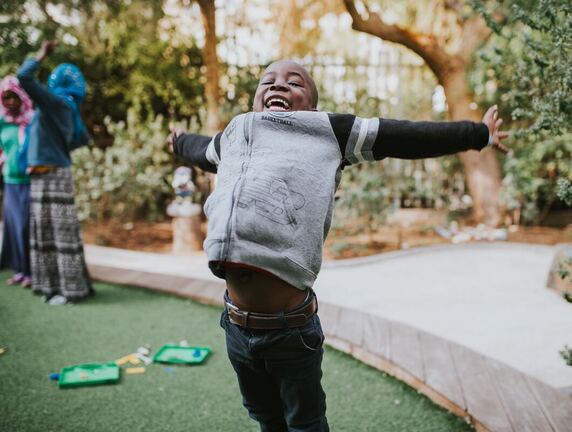



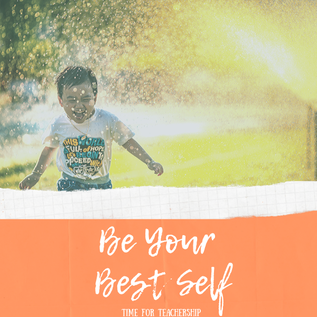
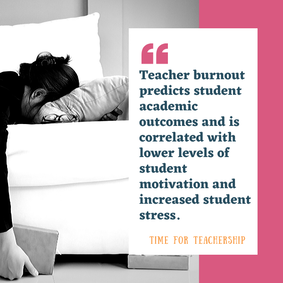
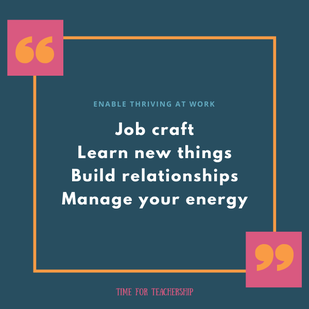
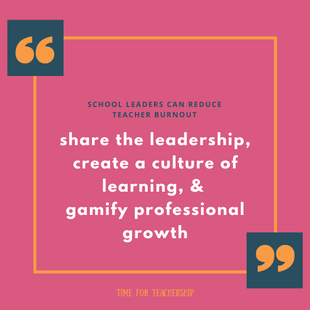
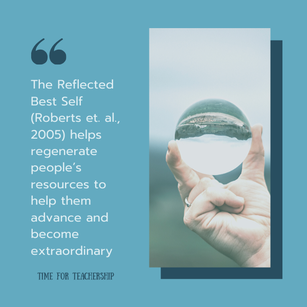
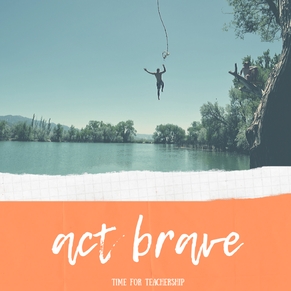
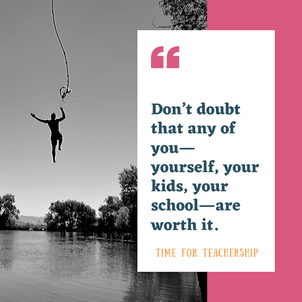
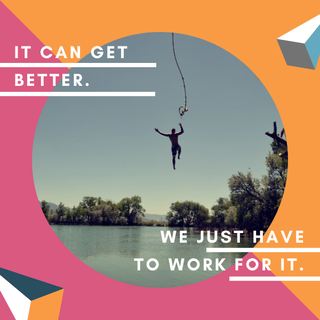
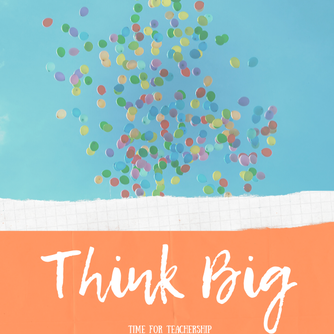
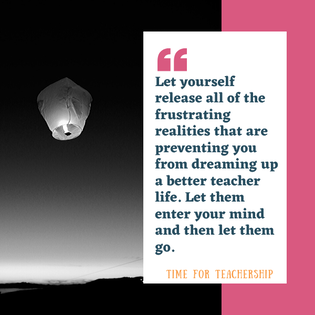
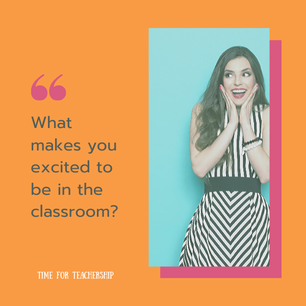

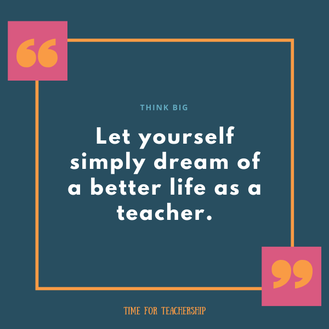
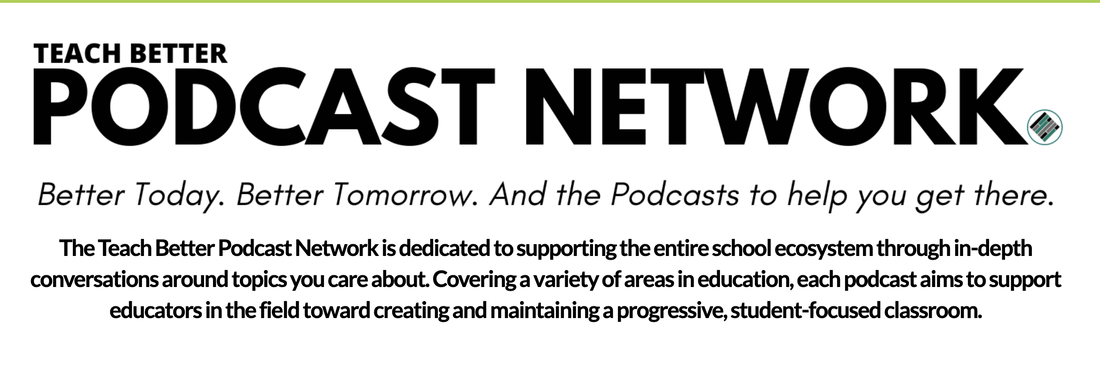
 RSS Feed
RSS Feed